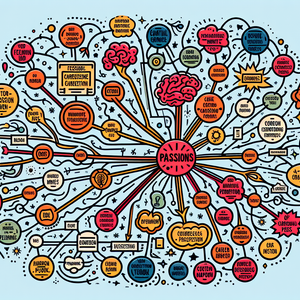The Science of Belonging in the Workplace

Belonging is not just a workplace buzzword—it is deeply rooted in human psychology and biology. Psychologists such as Abraham Maslow and Roy Baumeister have long emphasized its importance. Maslow, in his hierarchy of needs, placed belonging just above basic physiological and safety needs, arguing that humans cannot reach their full potential until they feel a sense of connection and community. Similarly, Baumeister and his colleague Mark Leary, through their "Belongingness Hypothesis," proposed that human beings are hardwired to form and maintain positive social bonds. From an evolutionary perspective, this makes sense. In ancient times, social bonds were necessary for survival—our ancestors depended on their tribes for protection, food, and support. Today, the workplace serves as a modern "tribe" for many people, making it a critical environment for fostering belonging. Neuroscience further underscores the importance of belonging. Studies reveal that social rejection triggers the same regions of the brain that process physical pain. This means that exclusion or isolation in the workplace doesn’t just feel bad—it can actually harm an employee’s mental and emotional health. Conversely, feeling a sense of belonging boosts psychological safety, a concept popularized by Harvard professor Amy Edmondson. Psychological safety allows employees to express themselves, take risks, and admit mistakes without fear of judgment or retaliation, laying the foundation for trust, collaboration, and innovation.
The Business Case for Belonging: Why It Matters
Organizations that prioritize belonging are not just doing the right thing from a moral or ethical standpoint—they’re also making a smart business decision. Research consistently shows that belonging leads to measurable benefits for both employees and organizations. Here are three key areas where belonging makes a difference: 1. Enhanced Employee Performance and Retention: Employees who feel they belong are more engaged, committed, and productive. A study by BetterUp, a leadership development platform, found that employees with a strong sense of belonging are 56% more productive, 50% less likely to leave their jobs, and 75% less likely to take sick days. These statistics underscore the significant impact of belonging on retention and performance. When employees feel valued and included, they are more motivated to contribute their best work and align with the organization’s goals. 2. Boosted Creativity and Innovation: Belonging fosters an environment where employees feel safe to voice unconventional ideas, challenge the status quo, and collaborate without fear of failure. A study published in the Journal of Business Research found that inclusive teams—where all members feel a sense of belonging—are 20% more innovative than less inclusive teams. Psychological safety, a key component of belonging, encourages employees to experiment and think outside the box, driving innovation and keeping organizations competitive in an ever-changing marketplace. 3. Improved Mental Health and Well-Being: A sense of belonging is strongly linked to mental health. Employees who feel connected to their teams and leaders report higher levels of happiness, job satisfaction, and emotional resilience. This, in turn, reduces absenteeism, burnout, and healthcare costs for employers. Belonging creates a virtuous cycle: when employees feel supported and valued, they are more likely to thrive both personally and professionally.
How Leaders Can Foster Belonging in the Workplace
Creating a culture of belonging requires intentional effort and leadership. While every organization is unique, several evidence-based strategies can help cultivate belonging: 1. Lead with Empathy and Inclusion: Leaders set the tone for workplace culture. By modeling empathy and authenticity, leaders can create an environment where employees feel seen and respected. This can involve sharing personal stories, admitting mistakes, and actively listening to employees’ concerns. Empathy-driven leadership not only builds trust but also strengthens the emotional bonds that contribute to belonging. 2. Celebrate Diversity and Encourage Participation: Belonging is closely tied to diversity, equity, and inclusion. While DEI ensures representation and fairness, belonging ensures that diverse voices are heard and valued. Leaders should actively seek input from employees of all backgrounds, roles, and experiences, creating opportunities for everyone to contribute. This can be achieved through team meetings, anonymous surveys, or one-on-one check-ins. 3. Recognize and Reward Contributions: Acknowledging employees’ efforts and achievements is a powerful way to reinforce belonging. Recognition doesn’t have to be elaborate—a simple thank-you note, shoutout during a meeting, or personalized feedback can go a long way in making employees feel appreciated and connected. 4. Create Inclusive Physical and Virtual Spaces: The design of physical and virtual workplaces plays a critical role in fostering connection. In office environments, communal areas such as lounges or breakout rooms encourage collaboration and informal interactions. In remote or hybrid settings, technology can bridge the gap through virtual team-building activities, regular check-ins, and inclusive communication practices. 5. Invest in DEI and Belonging Programs: Belonging cannot exist in the absence of diversity, equity, and inclusion. Organizations should invest in DEI training, workshops, and initiatives that address unconscious bias and systemic barriers. Employee Resource Groups (ERGs) and mentorship programs can also provide underrepresented employees with safe spaces to connect, share experiences, and advocate for change.
Real-World Example: Salesforce’s Commitment to Belonging
Salesforce, a global leader in customer relationship management, offers a compelling example of how belonging can be integrated into workplace culture. The company has implemented numerous initiatives, including Employee Resource Groups (ERGs) that provide safe spaces for underrepresented employees to connect and share their experiences. Additionally, Salesforce conducts annual Equality Training to educate employees about the importance of inclusion and belonging. These efforts have earned Salesforce a reputation as one of the best places to work, with employees reporting high levels of satisfaction, engagement, and connection.
The science is clear: belonging is more than a feel-good concept—it is a critical driver of individual and organizational success. By fostering a culture where employees feel valued, respected, and connected, organizations can unlock higher levels of performance, creativity, and well-being. In a competitive business landscape, investing in belonging is not just an ethical imperative—it is a strategic advantage. Leaders who embrace this challenge will not only build stronger, more inclusive teams but also create workplaces where everyone can thrive. After all, belonging isn’t just a feeling—it’s the foundation of a brighter, more equitable future of work.
Diversity, Equity, and Inclusion (DEI) Program Manager
Salesforce, Google, and Deloitte
Responsibilities
Develop and implement DEI strategies aligned with organizational goals, focusing on fostering an inclusive environment and a sense of belonging.
Collaborate with leadership and Employee Resource Groups (ERGs) to design initiatives that enhance representation and diverse participation across teams.
Analyze employee feedback and workplace data to assess DEI progress, identify gaps, and recommend improvements.
Workplace Culture Consultant
McKinsey, Korn Ferry, and smaller boutique consultancies
Responsibilities
Partner with organizations to assess and refine workplace culture, emphasizing psychological safety, employee engagement, and belonging.
Facilitate workshops, training sessions, and leadership coaching to promote empathy-driven leadership and inclusive practices.
Use data analytics to measure cultural impact and recommend actionable steps for improvement.
Employee Experience Designer
LinkedIn, Adobe, and HubSpot
Responsibilities
Design and implement initiatives that enhance employee satisfaction, engagement, and workplace connection, spanning onboarding to career development programs.
Collaborate with HR, DEI, and communications teams to create inclusive physical and virtual spaces that promote collaboration and connectivity.
Use employee feedback tools like Culture Amp or Qualtrics to identify challenges and implement targeted solutions.
Organizational Development Specialist
IBM, Amazon, and PwC
Responsibilities
Analyze and optimize organizational structures and workflows to foster collaboration, inclusion, and team cohesion.
Develop leadership development programs that emphasize emotional intelligence, mentoring, and inclusive decision-making.
Conduct surveys and focus groups to assess employee perceptions of belonging and recommend tailored interventions.
People Analytics Specialist
Microsoft, Facebook (Meta), and Accenture
Responsibilities
Leverage data to measure and track workforce trends related to belonging, DEI, engagement, and retention.
Create predictive models to identify risks (e.g., attrition) and opportunities (e.g., leadership pipeline) within employee populations.
Collaborate with HR and leadership to translate insights into actionable strategies that enhance employee well-being and connection.


